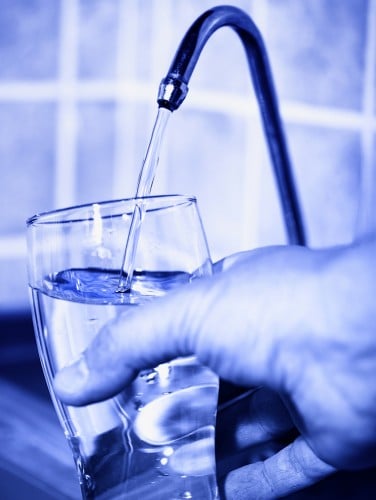One of the ways to remove harmful nitrates from drinking water is to convert them into nitrogen. This process has a significant drawback - the emission of ammonia, which is a poisonous gas. Researchers from the University of Twente (Twente) in the Netherlands discovered that by using palladium nanoparticles of controlled size, this emission can be reduced.

[Translation by Dr. Nachmani Moshe]
One of the ways to remove harmful nitrates from drinking water is to convert them into nitrogen. This process has a significant drawback - the emission of ammonia, which is a poisonous gas. Researchers from the University of Twente (Twente) in the Netherlands discovered that by using palladium nanoparticles of controlled size, this emission can be reduced.
Due to the extensive use of fertilizers, our groundwater is contaminated with nitrates, substances that can be a health problem if they enter our water supply system. Nitrate levels in the soil have decreased significantly in recent years, thanks to control programs and European standards. Attacking the problem at the source is one of the solutions, but it is still necessary to address the main water supply system. While this can be achieved through biological conversion (using bacteria that convert the nitrate to nitrogen gas), it is a slow process. Using palladium to catalyze this conversion of nitrite to nitrogen significantly speeds up this process. At the same time, the big disadvantage of this reaction lies in the fact that it also produces a toxic by-product - ammonia gas.
The amount of ammonia emitted depends on the method by which the palladium particles were prepared as well as on the physical structure of the catalyst. The researchers decided to use nanometer-sized colloidal palladium particles, since their dimensions can be easily controlled. These particles are anchored to the surface, so they cannot enter the drinking water stream. However, it is important to prevent their possibility of sticking to each other, so stabilizers are also added to the mixture, for example polyvinyl alcohol. Unfortunately, these stabilizing substances cover the surface of the palladium particles and thus impair their effectiveness as catalysts. By adding additional treatments, the researchers were able to fully re-expose the surface of the catalyst or modify it in a controlled manner. The method gave birth to palladium nanoparticles capable of accelerating the conversion to obtain nitrogen, while emitting only a small amount of ammonia. Thus, the method is responsible for the further development of an efficient catalytic treatment of water (eg, for domestic installations).
The news about the study
![Palladium nanoparticles used for the catalytic conversion of nitrites to nitrogen [courtesy University of Twente]](https://www.hayadan.org.il/images/content3/2015/01/ac-ac-500x180.jpg)
